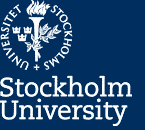
Researchers from Sweden, Britain, the Netherlands and Japan have performed chemical analyses of food residues found in pottery vessels from one of the best studied pottery sequences in the world; the Japanese Jomon culture. The Incipient Jomon period dates from approximately 15,000 to 11,800 years ago.
“The study shows that there are fat residues preserved in organic crusts found on pottery from the Incipient Jomon period. By analysing these, we can see what the vessels were used for. The question of why people began to manufacture cooking vessels is very basic – it's the origin of all the pots and pans in the kitchens of today that we are looking for,” says Sven Isaksson, Associate Professor at the Archaeological Research Laboratory and the Centre for the Study of Cultural Evolution, Stockholm University. “The results show that a significant proportion of the vessels were used to prepare fish, both freshwater and marine.”
The beach is an example of an ecotone, a transition area between different types of landscapes, which is often very biologically productive and rich in food both in water and on land. They were used intensively by prehistoric hunter-gather groups during the late Ice Age.
“Maybe it was indeed life in the rich riparian zone that was the initial driving force to invest time and effort in developing ceramic technology, which then paved the way for the intensified use of vessels among hunters and gatherers in more recent periods,” says Sven Isaksson.
For a long time, the introduction of ceramic technology has been linked to the introduction of agriculture. But now researchers know that the technology used to produce fireproof pottery cookware was invented by hunter-gather groups in East Asia towards the end of the last Ice Age, between 20,000 and 12,000 years ago. This was a time when man had to adapt to a warmer climate as well as new natural environments.
“As yet we know very little about the causes for the emergence of pottery crafts and its subsequent spread. One can imagine that the early pottery vessels provided prehistoric hunter-gather groups with new, appealing and beneficial ways to both prepare and consume food. But how these vessels were actually used, and for what, has until now been completely unknown,” says Sven Isaksson.
The analysis of the organic remains of some of the world's oldest pottery vessels allows for studies of the further development of this technology by analysing hunter-gatherers’ pottery from later periods.
“In this area we are quite to the front in Sweden and we have already conducted extensive analyses on food residues from approximately 5,000 year-old pottery vessels used by hunter-gather groups,” says Sven Isaksson. “Intriguing similarities between these analyses and the older Japanese material that we have now analysed are just the links to beaches and the preparation of fish. This opens up for very exciting research in the future, e.g. in relation to how new technologies have emerged, spread and changed over time.”
Link to the Nature article: “Earliest evidence for the use of pottery”
For further information
Sven Isaksson, Associate Professor at the Archaeological Research Laboratory and the Centre for the Study of Cultural Evolution, Stockholm University, phone +46 (0)8 674 7367, cell +46 (0)703 55 89 69, e-mail, sven.isaksson@arklab.su.se.


